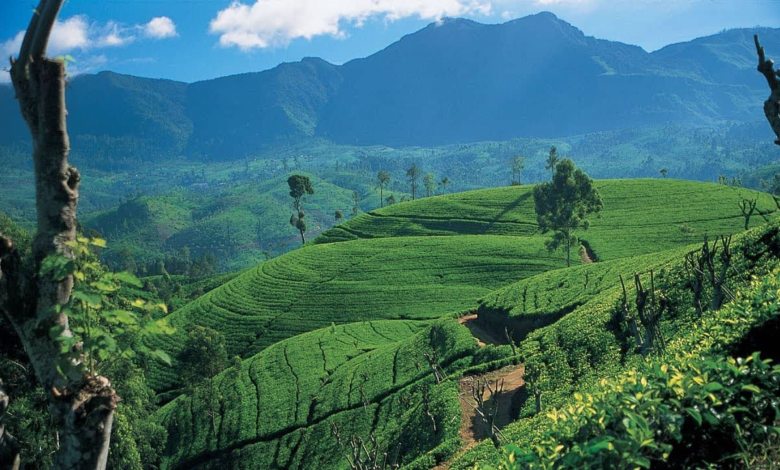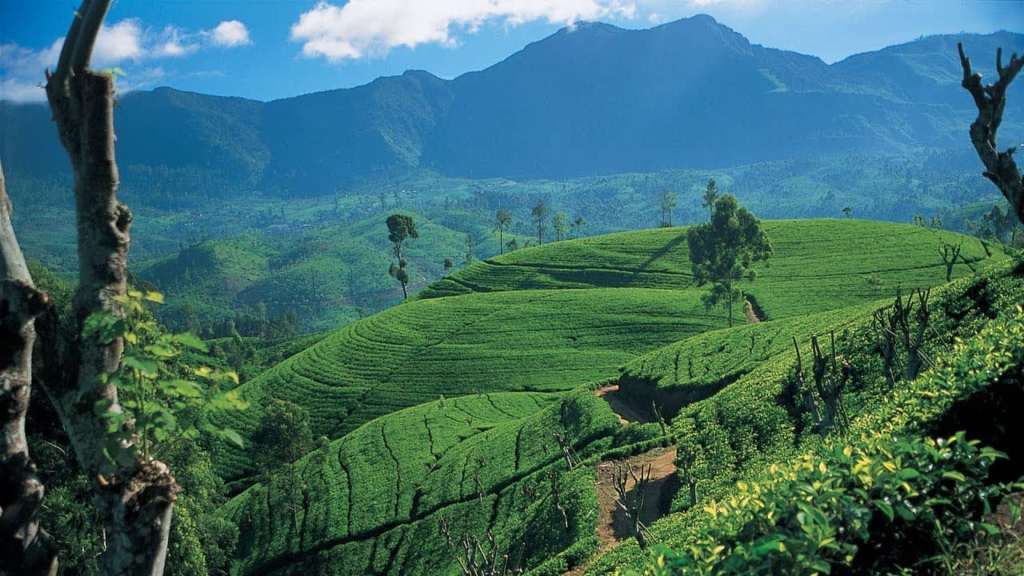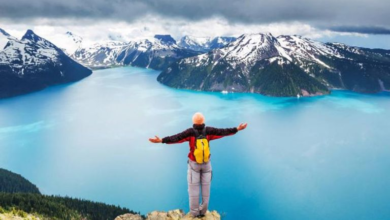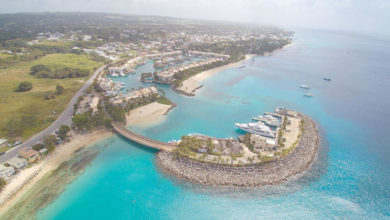A Guide to Transportation and Fast Connections for Tourism and Travel in Sri Lanka

Introduction:
Sri Lanka, a tropical paradise nestled in the Indian Ocean, offers visitors a rich blend of stunning landscapes, vibrant culture, and ancient heritage sites. When planning a trip to this beautiful island nation, it is essential to have a comprehensive understanding of transportation and fast connections between cities. This guide aims to provide valuable information on various modes of transportation available in Sri Lanka, ensuring a smooth and enjoyable travel experience.
- Air Travel:
Sri Lanka is well-connected by air, with Bandaranaike International Airport in Colombo serving as the main gateway. Several international airlines operate direct flights to and from major cities worldwide. Domestic air travel within Sri Lanka is also available, with Cinnamon Air and FitsAir offering convenient connections between popular tourist destinations such as Colombo, Kandy, and Galle. - Train Travel:
The Sri Lankan railway network is an iconic way to explore the country’s lush landscapes and scenic beauty. The railway system connects major cities, including Colombo, Kandy, Ella, and Galle. The trains offer different classes, ranging from first-class observation cars to budget-friendly options. The popular train routes, such as the Colombo to Kandy and Ella to Nuwara Eliya journeys, provide breathtaking views of tea plantations, waterfalls, and mist-covered mountains. - Bus Travel:
Buses are a common mode of transportation in Sri Lanka, offering an extensive coverage network throughout the country. The Sri Lanka Transport Board (SLTB) operates public buses, providing affordable travel options for both short and long distances. Private bus operators also offer intercity services with varying levels of comfort and luxury. The expressway bus services, such as the Colombo to Galle route, ensure faster travel times. - Tuk-tuks:
A quintessential mode of transport in Sri Lanka is the three-wheeled tuk-tuk. These compact vehicles are ideal for short distances and offer a unique and adventurous way to navigate through bustling cities and towns. Negotiate the fare with the driver before starting the journey, and don’t forget to buckle up for safety. - Hire a Car or Motorcycle:
For travelers seeking flexibility and independence, renting a car or motorcycle is a viable option. Several international and local car rental companies operate in Sri Lanka, providing a range of vehicles to suit different budgets and preferences. However, keep in mind that driving in Sri Lanka can be challenging due to the country’s traffic conditions and road infrastructure. - Fast Connections:
To ensure fast connections between cities, Sri Lanka has developed a network of expressways and highways. The Southern Expressway connects Colombo with Galle and Matara, significantly reducing travel time. The Colombo-Katunayake Expressway offers a convenient route to the airport, while the Central Expressway, currently under construction, will connect Colombo with Kandy and beyond, further enhancing travel efficiency.
These additional details should provide you with a comprehensive understanding of transportation options and considerations when traveling in Sri Lanka. By being well-informed and prepared, you can make the most of your journey and enjoy the diverse experiences the country has to offer.

Here are some additional details about transportation and fast connections in Sri Lanka:
- Air Taxis and Helicopters:
For those seeking a luxurious and time-efficient mode of travel, air taxis and helicopters are available. Several private companies offer chartered flights and helicopter services, allowing you to reach your destination quickly and enjoy stunning aerial views of the country’s landscapes. - Ferries and Boats:
Sri Lanka’s coastal regions and islands can be accessed through ferry services and boat rides. The coastal towns of Negombo and Balapitiya provide ferry connections to popular destinations like Jaffna and the scenic Delft Island. Additionally, boat rides are available for exploring the Madu Ganga River in Balapitiya and enjoying wildlife safaris in places like Pottsville Lagoon and Trincomalee. - Public Transportation within Cities:
Within major cities like Colombo, Kandy, and Galle, public transportation options include buses and trains. In Colombo, an extensive bus network operated by the Sri Lanka Transport Board (SLTB) and private operators covers various routes, making it convenient to navigate the city. The recently introduced Colombo Light Rail Transit (LRT) system is also expected to enhance public transportation within the city. - Ride-Hailing Services:
Ride-hailing services like Uber and PickMe are available in Sri Lanka, particularly in urban areas. These services provide a convenient and reliable way to get around cities and towns. Using a smartphone app, you can easily book a car or tuk-tuk, track your ride, and pay electronically. - Train Reservations and Seat Classes:
If you plan to travel by train, it is advisable to make reservations, especially during peak tourist seasons. Sri Lanka Railways offers online and in-person booking services. The available seat classes include first class, second class (with both reserved and unreserved options), and third class. First-class observation cars provide panoramic views of the surroundings and are popular among tourists. - Traffic and Travel Times:
It’s important to note that traffic congestion can be significant in Sri Lanka, particularly in major cities and during peak hours. Plan your travel accordingly, allowing extra time for potential delays. Travel times can vary depending on the distance and mode of transportation. For example, a train journey from Colombo to Kandy takes around three to four hours, while a bus journey can take slightly longer due to traffic conditions. - Road Safety:
When traveling by road, it is essential to prioritize safety. Be cautious of reckless driving and follow traffic rules. Wear seat belts in vehicles, and if you choose to ride a motorcycle, always wear a helmet. Additionally, be aware of pedestrians and other road users, particularly in busy areas.
By considering these additional details, you’ll be well-prepared to navigate the transportation options available in Sri Lanka and make the most of your travel experience.

Certainly! Here are some more details regarding transportation and fast connections in Sri Lanka:
- Train Travel Tips:
- To secure a seat on popular train routes, such as the scenic Colombo to Kandy or Ella to Nuwara Eliya journeys, it is recommended to book tickets in advance, especially during peak travel seasons.
- Trains in Sri Lanka can get crowded, particularly during weekends and public holidays. If you prefer a more comfortable and spacious experience, consider opting for first-class or reserved second-class tickets.
- Keep in mind that train schedules in Sri Lanka may vary, so it’s advisable to check the updated timetables before planning your journey.
- Train travel in the hill country, particularly on routes like Ella to Kandy, offers breathtaking views. Try to secure a window seat on the left side of the train for the best scenic vistas.
- Public Buses and Routes:
- Sri Lanka’s public bus system is an economical way to travel between cities and towns. The Sri Lanka Transport Board (SLTB) operates buses that connect various destinations across the country.
- Public buses are categorized into different classes, such as “normal” and “luxury.” Luxury buses tend to be more comfortable and offer air conditioning, while normal buses are more budget-friendly.
- Bus fares are generally affordable, but they vary depending on the distance traveled. It’s advisable to carry small change to pay for your fare.
- Bus routes are displayed in Sinhala and Tamil languages, so it may be helpful to have a general idea of the route or ask locals for assistance.
- Taxis and Ride Services:
- Taxis are widely available in Sri Lanka, particularly in urban areas and tourist hotspots. They can be hailed on the street, or you can book them through hotel concierges or taxi services. Negotiate the fare with the driver before starting your journey or ensure that the meter is used.
- Ride-hailing services like Uber, PickMe, and Lyft are popular and convenient options for getting around in Sri Lanka. Download the respective apps on your smartphone, and you can easily book a car or tuk-tuk, track your ride, and make cashless payments.
- Tuk-tuks (three-wheeled vehicles) are a unique mode of transportation in Sri Lanka. They are readily available in cities and towns, and the fares can be negotiated with the driver. Ensure that you agree on the fare before starting your journey.
- Renting Vehicles:
- Renting a car, motorcycle, or bicycle is a popular choice for travelers who prefer flexibility and independence. Several international and local car rental companies operate in Sri Lanka, providing a range of vehicles to choose from.
- To rent a vehicle, you need a valid international driving permit (IDP) along with your national driving license. It’s important to familiarize yourself with Sri Lanka’s traffic rules and regulations before driving.
- Renting a motorcycle or bicycle can be an enjoyable way to explore smaller towns and rural areas. Exercise caution, wear appropriate safety gear, and be mindful of the road conditions.
- Fast Connections and Infrastructure:
- Sri Lanka has made significant improvements in its transportation infrastructure to facilitate fast connections between cities. The Southern Expressway, for instance, has reduced travel time between Colombo and cities like Galle and Matara.
- The Colombo-Katunayake Expressway provides a quick connection between Colombo and Bandaranaike International Airport, making it convenient for travelers.
- The Central Expressway, currently under construction, will connect Colombo with Kandy and further extend to Dambulla and Trincomalee, enhancing travel efficiency and reducing travel times.
By considering these additional details and tips, you’ll be well-prepared to navigate Sri Lanka’s transportation options and make the most of your travel experience in the country.

Here are some more details about transportation and fast connections in Sri Lanka:
- Bicycle Rentals:
For eco-conscious travelers or those looking for a leisurely way to explore smaller towns and scenic areas, bicycle rentals are available in various tourist destinations. You can rent bicycles from local shops or through guesthouses and hotels. Cycling allows you to immerse yourself in the local culture, enjoy the natural beauty, and discover hidden gems at your own pace. - Motorized Scooters:
In addition to cars and motorcycles, motorized scooters are a popular mode of transportation in Sri Lanka, especially in urban areas like Colombo. These scooters, often referred to as “scooties,” provide a convenient way to navigate through busy streets and reach your destination quickly. Rental options for motorized scooters are available in some tourist areas. - Private Driver:
If you prefer a hassle-free and comfortable travel experience, hiring a private driver is a convenient option. Many tour operators and travel agencies offer private driver services with knowledgeable drivers who can also serve as guides. Having a private driver allows you to customize your itinerary, explore off-the-beaten-path destinations, and receive firsthand insights into the local culture. - Airport Transfers:
Upon arrival in Sri Lanka, you can arrange for airport transfers to your accommodation. Most hotels and travel agencies provide airport pick-up services, ensuring a smooth transition from the airport to your destination. This is particularly helpful if you have a late-night or early-morning arrival, as it eliminates the need to negotiate with taxi drivers or search for transportation options. - Travel Apps and Resources:
To make your travel experience in Sri Lanka more convenient, consider utilizing travel apps and resources. There are mobile apps available that provide information on train schedules, bus routes, and local transportation options. These apps can help you plan your journeys, check real-time updates, and navigate through the public transportation system more efficiently. - Traveling to Remote Areas:
If you plan to visit remote and less touristy areas of Sri Lanka, it’s important to note that transportation options may be limited. In such cases, it’s advisable to plan your trip in advance, arrange private transportation, or consult with local tour operators who specialize in off-the-beaten-path destinations. - Safety and Security:
While traveling in Sri Lanka, it’s essential to prioritize safety and security. Keep your belongings secure and be cautious of pickpocketing in crowded areas. If you’re using public transportation, be vigilant about your surroundings and ensure that your belongings are within sight. It’s also recommended to use reputable transportation services and avoid unlicensed vehicles or unauthorized drivers. - Cultural Etiquette:
When using public transportation or interacting with drivers, it’s important to observe cultural etiquette. Sri Lankans are generally friendly and hospitable, so it’s polite to greet drivers and fellow passengers with a smile or a simple greeting. It’s also customary to remove your footwear when boarding certain types of transportation, such as tuk-tuks or private cars.
By considering these additional details and tips, you’ll be well-informed and prepared to make the most of your transportation options when traveling in Sri Lanka.

Here are some more details about transportation and travel options in Sri Lanka:
- Motorized Three-Wheelers (Tuk-tuks):
Tuk-tuks, also known as auto-rickshaws, are a common mode of transportation in Sri Lanka. These small, three-wheeled vehicles are a convenient way to navigate through narrow streets and short distances. Tuk-tuks are especially popular for short trips within cities or for exploring local attractions. Negotiate the fare with the driver before starting your journey or ensure that the meter is used. - Domestic Flights:
If you need to travel quickly between distant cities or regions, domestic flights are available in Sri Lanka. Several local airlines operate domestic routes, providing convenient connections to destinations like Jaffna, Trincomalee, Batticaloa, and the southern coastal areas. Domestic flights are a time-saving option, particularly when traveling long distances. - Motorized Paragliding and Microlight Flying:
For those seeking unique and adventurous experiences, motorized paragliding and microlight flying are available in certain locations in Sri Lanka. These activities allow you to soar above the landscapes and enjoy breathtaking aerial views of the country’s natural beauty. Safety precautions and experienced pilots ensure a thrilling yet secure experience. - Traffic Rules and Regulations:
When traveling in Sri Lanka, it’s important to familiarize yourself with the country’s traffic rules and regulations. Sri Lanka drives on the left side of the road, and the speed limits are generally posted in kilometers per hour (km/h). Adhere to speed limits, follow traffic signals, and be mindful of road signs. It’s also worth noting that seat belts are mandatory for drivers and front-seat passengers. - Road Conditions:
While major highways and roads in Sri Lanka are generally well-maintained, some rural and remote areas may have rougher road conditions. Be prepared for occasional potholes, uneven surfaces, and narrow roads in certain regions. It’s advisable to drive cautiously and adjust your speed accordingly, particularly when traveling through less-developed areas. - Traveling with Children:
If you’re traveling with children in Sri Lanka, ensure their safety and comfort during transportation. Use appropriate child car seats when traveling by private vehicle, and keep children under supervision at all times. Public buses and trains may not have designated child safety features, so it’s important to take extra precautions when traveling with young children. - Traveling during Festivals and Holidays:
Sri Lanka celebrates numerous festivals throughout the year, and these occasions can affect transportation and travel arrangements. During major festivals and public holidays, transportation services may be busier, and it’s advisable to plan your journeys in advance. Additionally, some roads may be closed or experience increased traffic due to processions or celebrations. - Travel Insurance:
It’s highly recommended to have travel insurance when visiting Sri Lanka. Travel insurance provides coverage for unexpected events, such as medical emergencies, trip cancellations, or lost baggage. Ensure that your insurance policy covers the activities and modes of transportation you plan to engage in during your stay.
Conclusion:
Exploring Sri Lanka’s diverse attractions is made easier by a well-connected transportation system. Whether you choose to fly, take the train, hop on a bus, or experience the thrill of a tuk-tuk ride, there are plenty of options to suit every traveler’s needs. By planning your itinerary and understanding the available transportation modes, you can make the most of your time in Sri Lanka and create unforgettable memories of this enchanting island nation.



